Posts Tagged: Eric Mussen
The Water Girls
If you're struggling with triple-digit temperatures, think about the honey bees. They need to collect water for their colony to cool the hive so their brood can develop. And for other purposes. Just call them "The Water Girls." Lately the bees have...
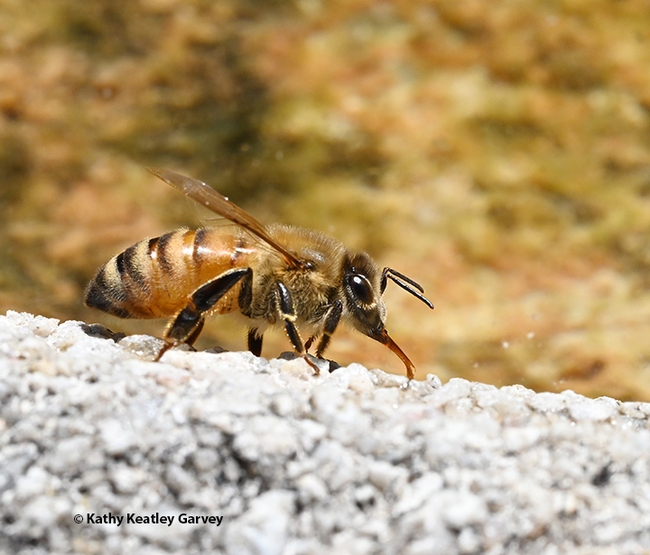
A honey bee, its proboscis extended, collects water from the edges of a birdbath. (Photo by Kathy Keatley Garvey)
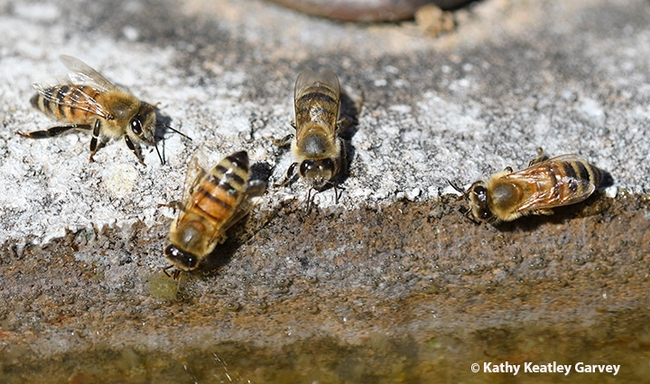
For worker bees: Two's company, three's a crowd, and four is a work party. Bees collecting water from a birdbath. (Photo by Kathy Keatley Garvey)
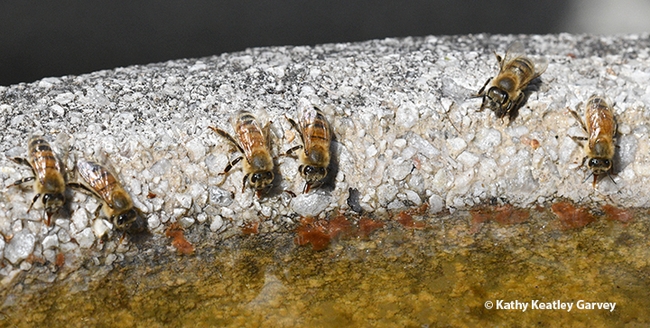
'The Water Girls'--six of them--collecting water at a Vacaville birdbath. Note the absence of birds. (Photo by Kathy Keatley Garvey)
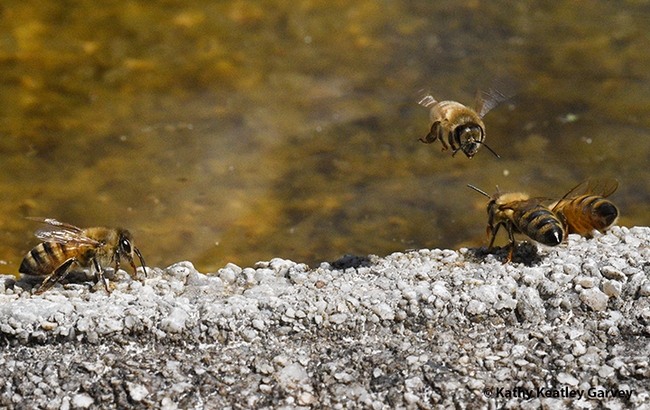
A honey bee heading back to her colony after collecting water to cool down the hive. (Photo by Kathy Keatley Garvey)
Celebrating the15th Anniversary of the UC Davis Bee Haven
The place to "bee" on Saturday, April 6 is the UC Davis Bee Haven. That's when the UC Davis Department of Entomology and Nematology will celebrate the 15th anniversary of its bee garden with an open house from 10 a.m. to noon. It's free and family...
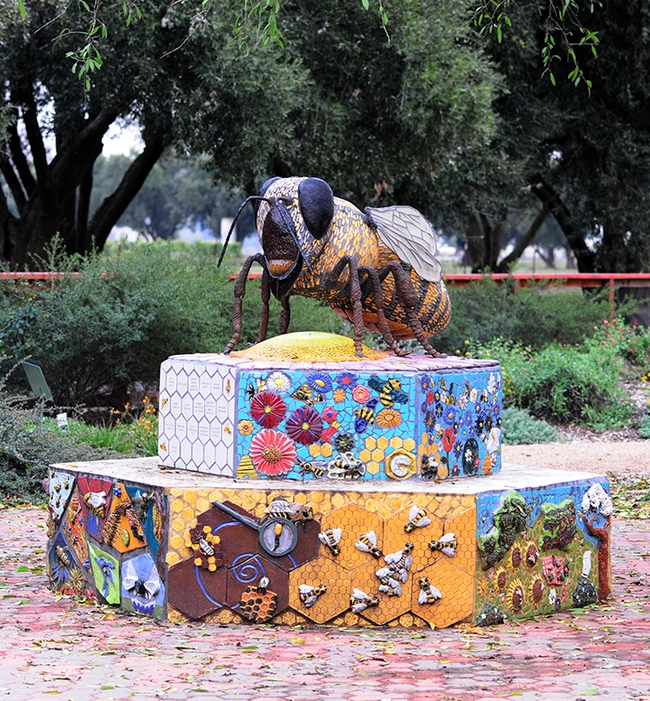
A ceramic-mosaic sculpture, "Miss Beehaven," anchors the UC Davis Bee Haven. It is the work of self-described "rock artist" Donna Billick of Davis. (Photo by Kathy Keatley Garvey)
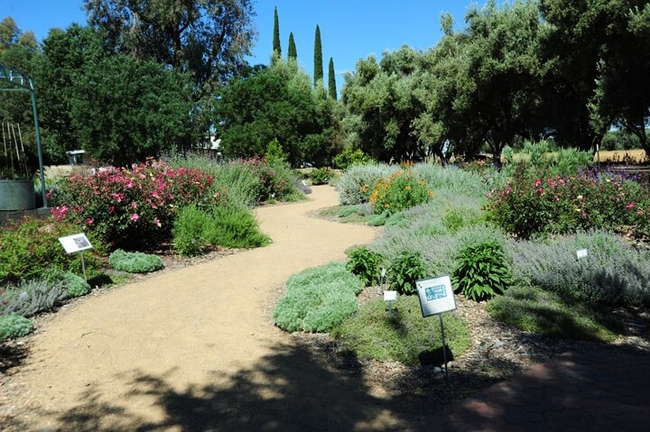
The early years of the UC Davis Bee Haven. This image was taken in May of 2012. (Photo by Kathy Keatley Garvey)
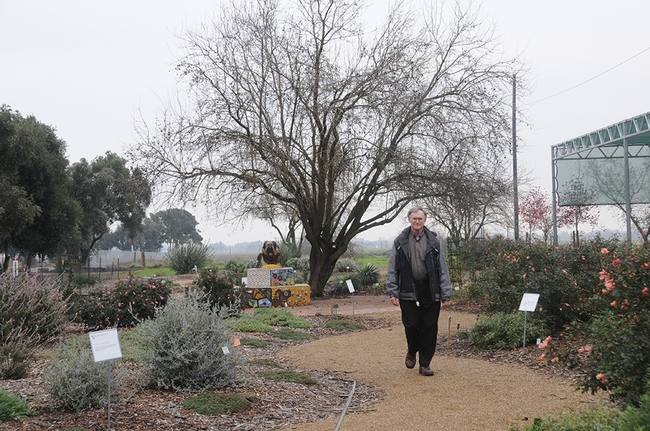
One of the "movers and shakers" of the founding of the UC Davis Bee Haven was the late Extension apiculturist emeritus Eric Mussen (1943-2022) of the UC Davis Department of Entomology and Nematology. This image was taken Jan. 13, 2011. (Photo by Kathy Keatley Garvey)
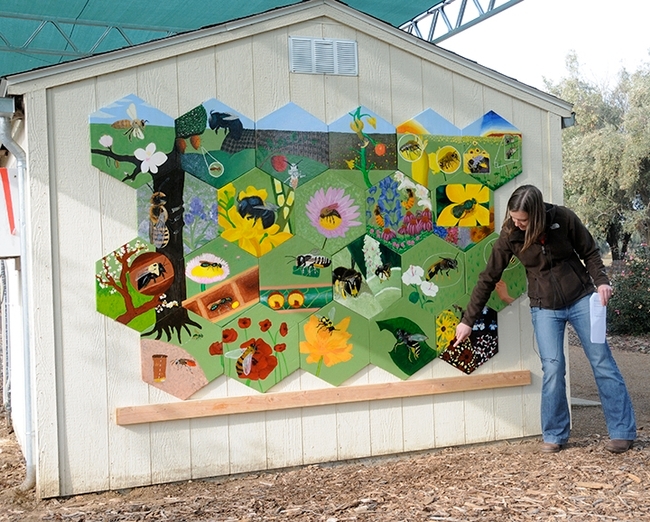
In 2011, then UC Davis doctoral student Sarah Dalrymple (pictured) coordinated the native bee mural at the UC Davis Bee Haven. The project was part of an entomology class taught by UC Davis distinguished professor Diane Ullman, artist and entomologist. (Photo by Kathy Keatley Garvey)
It's Bee-ginning to Look a Lot Like...
It's bee-ginning to look a lot like Christmas... All hail our littlest agricultural worker. European colonists brought the honey bee (Apis mellifera) to what is now the United States in 1622. Specifically, the bees arrived at the Jamestown...
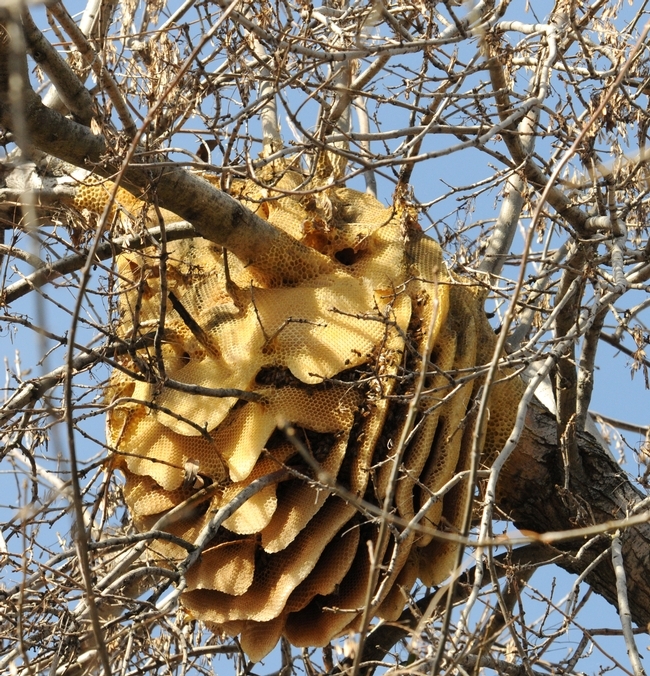
A feral honey bee colony (now gone) from a backyard in Vacavile, Calif. (Photo by Kathy Keatley Garvey)
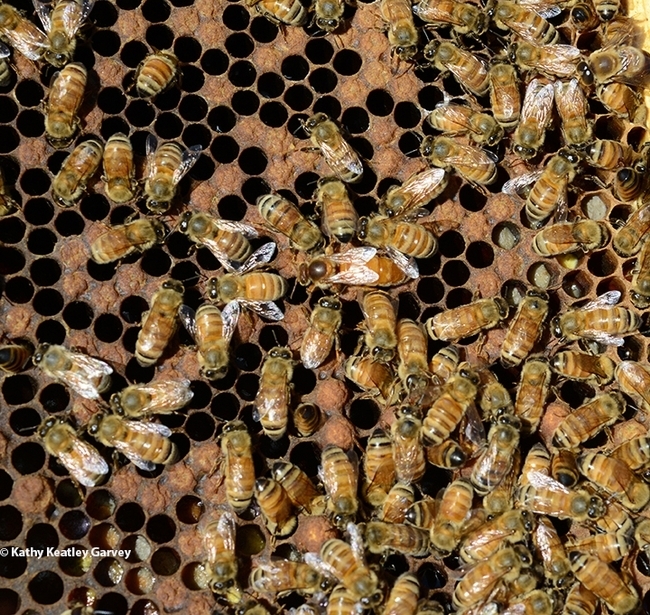
Inside a managed hive at UC Davis. (Photo by Kathy Keatley Garvey)
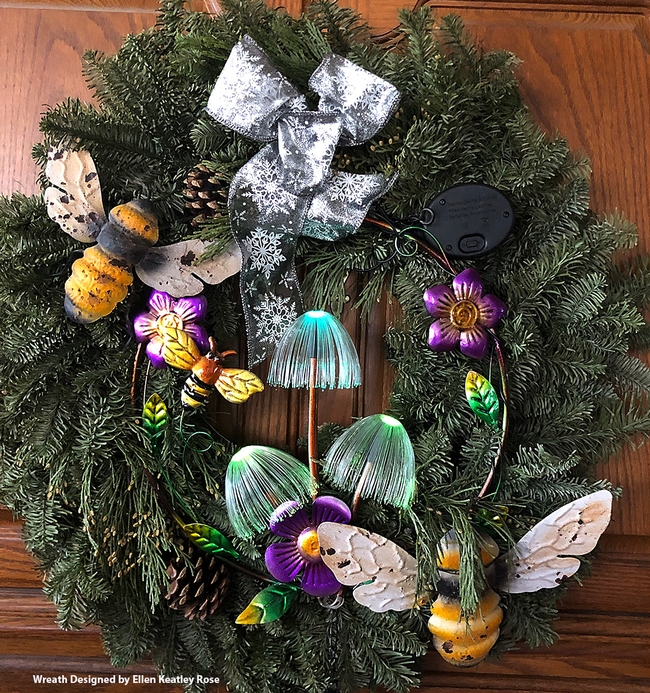
A bee-utiful Christmas wreath, designed and crafted by Ellen Keatley Rose of Castle Rock, Wash. (Photo by Kathy Keatley Garvey)
Revisiting 'The 13 Bugs of Christmas'
Back in 2010, UC Cooperative Extension apiculturist Eric Mussen (1944-2022) of the UC Davis Department of Entomology and Nematology, and yours truly, department communications specialist, wondered why no insects appear in "The Twelve Days...
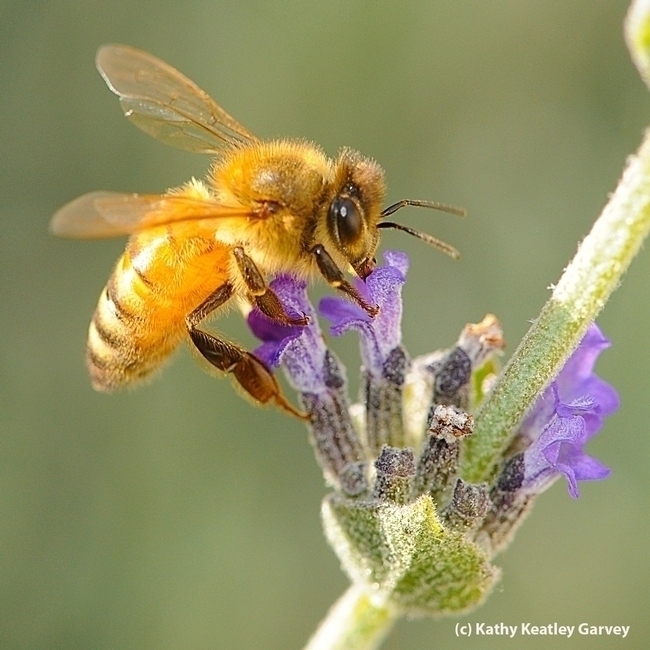
A golden honey bee, a Cordovan, nectaring in a Vacaville, Calif., garden. (Photo by Kathy Keatley Garvey)
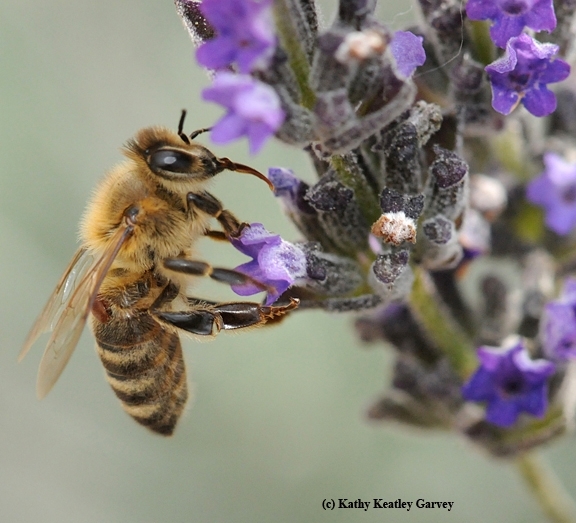
A varroa mite attached to a foraging bee in a Vacaville, Calif. garden. (Photo by Kathy Keatley Garvey)
Honey Bee Larvae: Weigh to Go!
It's a week before Christmas and it's not just the geese that are getting fat. If you're thinking that the bathroom scale and you are not good friends, not to worry. We remember the late Extension apiculturist emeritus Eric...
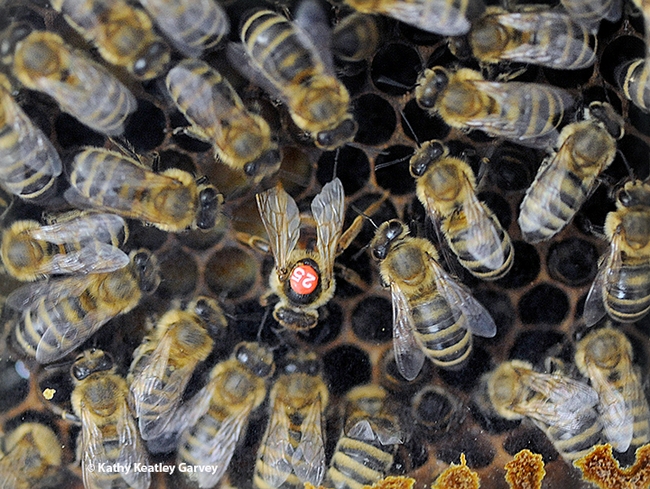
Queen bee laying an egg. A honey bee egg weighs about 0.1 mg, according to the late Extension apiculturist emeritus Eric Mussen, UC Davis Department of Entomology and Nematology. (Photo by Kathy Keatley Garvey)
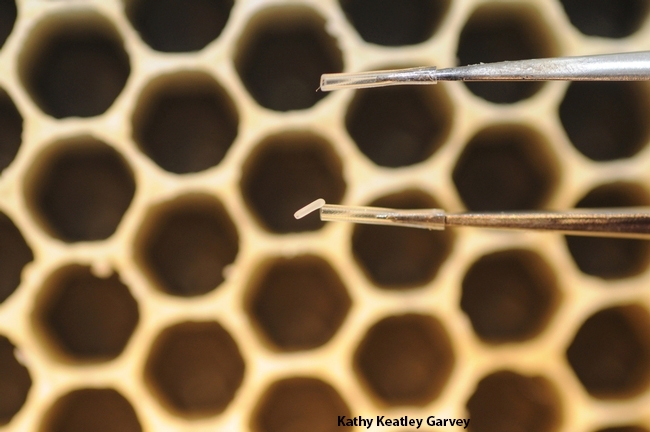
Over the next six days, a tiny egg will soar to 120 mg. (Photo by Kathy Keatley Garvey)
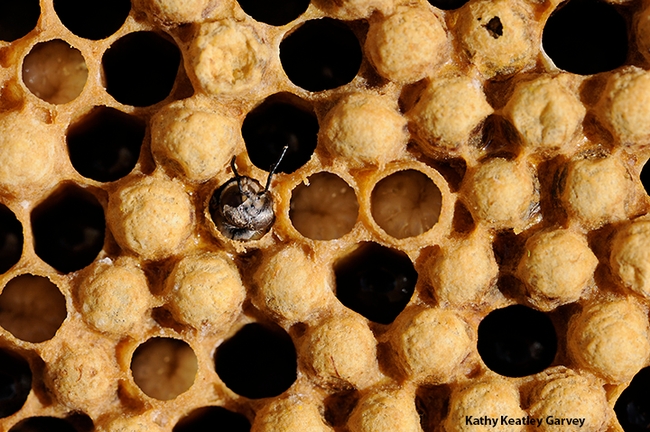
Honey bee larvae grow fast. Here a bee, next to larvae, is ready to emerge. (Photo by Kathy Keatley Garvey)
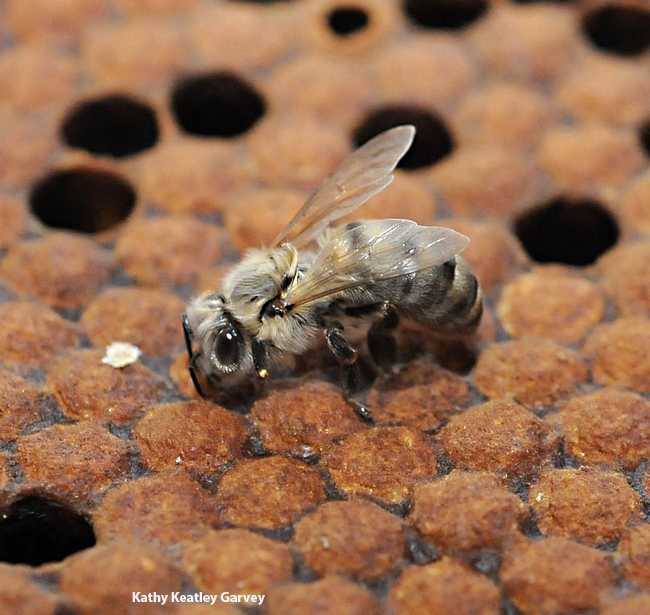
Newly emerged honey bee. It weighs about 1000 times the weight of a one-day-old bee larva. (Photo by Kathy Keatley Garvey)
